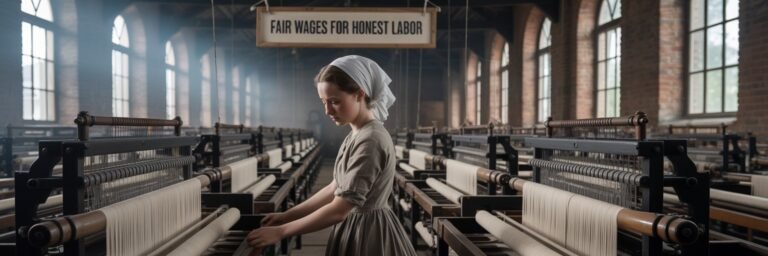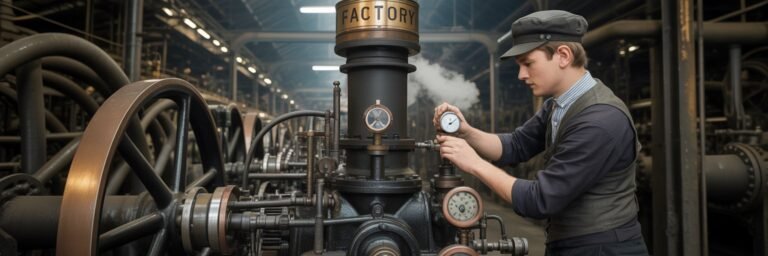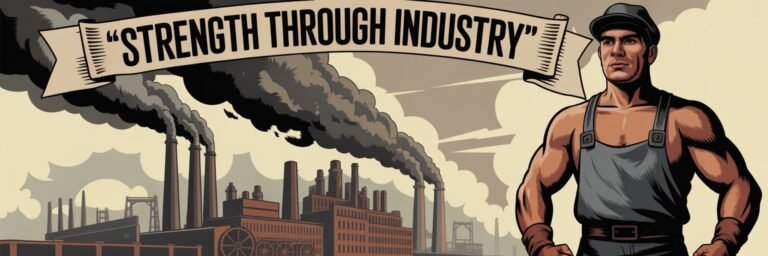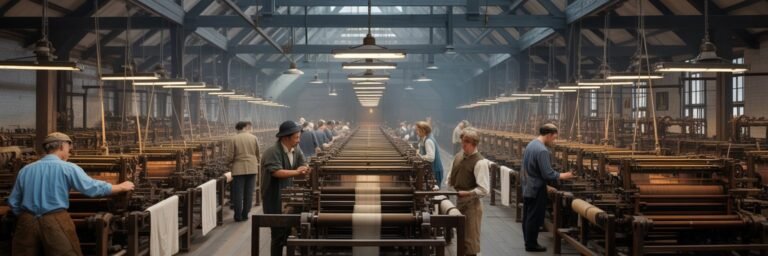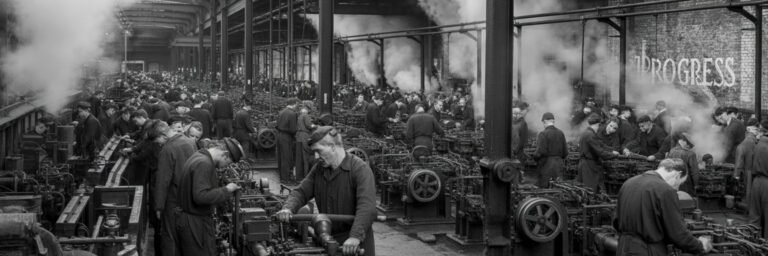INTRODUCTION
As the echoes of hammer on anvil fade, the hum of spinning bobbins are slowly replaced by whirring algorithms and digital dashes. The Industrial Revolution no longer saturates the present moment, but its influences continue to ripple through time, touching every corner of modern society. Whether it’s in the machine that pours our morning coffee or the technology that powers our work, the effects of this monumental period persist. By examining the history, theories, controversies, and symbolism of the Industrial Revolution, we can piece together its profound impact on modern civilization.
HISTORICAL BACKGROUND
Originating in 18th century Britain, the Industrial Revolution marked a seismic shift from agrarian, handcraft economies to those characterized by mechanized industry and manufacturing. Key events like the inventions of the steam engine by James Watt in 1775 and the spinning jenny by James Hargreaves in 1764, sparked an era of accelerated advancement that would shape the world for centuries to come.
Mining became a cornerstone of industry, with coal mines powering the revolution and providing the fuel for steam engines. Iron and steel production soared, with landmarks like the Eiffel Tower representing the age of iron and steel. Meanwhile, the textile industry was radically transformed; cotton became king by the 1840s, and by 1850 more than 50% of British exports were cotton goods.
The revolution wasn’t limited to tangible goods and commodities. It also revolutionized the very landscape of human society—urban areas expanded as rural populations flooded into cities to work in factories. All these innovations and societal shifts, while vigorous in their developmental onslaught, were not without their repercussions and controversies.
THEORIES AND INTERPRETATIONS
While it’s universally acknowledged that the Industrial Revolution marked the dawn of modern society, interpretations as to the consequences and meanings vary. Historians like Charles More speak of its boon to economic growth, leading to increased incomes and improved living standards. More contends that, while the initial years brought about immense hardships, the overall impact of industrialization was overwhelmingly positive.
Contrasting More’s optimistic reading, historian Robert Allen asserts that the Industrial Revolution precipitated economic inequality. Allen points to how wealthy magnates benefited while the workers, and particularly child laborers, suffered harshly due to poor working conditions and poor remuneration.
MYSTERIES AND CONTROVERSIES
A contentious debate that remains unresolved is the ‘Industrial Revolution Malthusian Paradox’. Founded in Thomas Robert Malthus’s theory of population growth, it remarks that the improved living standards the Revolution brought should have led to a population explosion, but in fact, Britain’s population growth rate slowed.
Another ongoing controversy lies in the ruthless exploitation of child labor during the revolution. Some defenders argue it was inherent to the period’s advancement, but critics adamantly regard it as a gross violation of human rights. The true necessity and impact of child labor in this period continues to be fiercely debated.
SYMBOLISM AND CULTURAL SIGNIFICANCE
The Industrial Revolution symbolizes humanity’s capability for dramatic transformation. It represents progress, development, and the human tendency towards innovation. It’s a sign of the resilience and adaptability of societies in coping with rapid changes.
Nevertheless, it also embodies the struggles and costs associated with progress—socioeconomic gaps, environmental degradation, and labor exploitation are part and parcel of its narrative. Charles Dickens’s novels like ‘Hard Times’ and Emily Bronte’s ‘Wuthering Heights’ poignantly capture the era’s dichotomy—historic progress shadowed by social unrest.
MODERN INVESTIGATIONS
Efforts today continue to dissect the Industrial Revolution, principally in the crosshairs of environmental study. Scientists point to the revolution as the starting point of anthropogenic climate change, with some claiming it marks the start of a new geologic epoch—the Anthropocene.
Furthermore, research continues into the societal transformations caused by the Revolution, investigating its contribution to phenomena like global urbanization, the rise of capitalism, and the demographic transition.
LEGACY AND CONCLUSION
As a crucible of change, the Industrial Revolution left an indelible mark on the world. Its legacy pervades every facet of our lives—our economies, our societies, our technologies, and even our environment carry its imprint.
However, the Industrial Revolution is not just a bridge to our present—it’s a mirror reflecting our ambitions and fears. It demonstrates both our towering potential and the devastating costs we could incur. In grappling with impending technological revolutions, we must remember the lessons we’ve gleaned from this fundamental shift in human history—a beacon of progress and a solemn warning of unexamined growth.
From the mines of Cornwall to the skyscrapers of New York, from the steam engine’s blast to the click of a keyboard button—the Industrial Revolution’s legacy permeates our world, reminding us of the inertial momentum of progress and the timeless necessity for thoughtful regulation and equanimous resilience.

